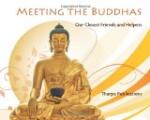Their wild sweet notes seem to come from a happy heart, and nothing can be prettier than to see a number of these goldfinches swinging on the brown sunflower and daintily feasting on the seeds.
Mr. Frank M. Chapman in “Bird-Life” says: “I wish that every one knew the Goldfinch. His gentle ways and sweet disposition are never-failing antidotes for discontent. One cannot be long near a flock of these birds without being impressed by the refinement which seems to mark their every note and action. They show, too, a spirit of contentment from which we may draw more than a passing lesson. ’Hear me, hear me, dearie,’ they call as they feed among the weeds or on the birch buds, and, no matter how poor the fare, they seem thankful for it. The seeds of the dandelion, thistle, and sunflower are among their favorites; and if you would attract goldfinches as well as some other birds, devote a corner of your garden to sunflowers.”
BIRDS’ TRADES.
The swallow is a mason,
And underneath the eaves
He builds a nest, and plasters it
With mud and hay and leaves.
Of all the weavers that I know
The oriole is the best;
High on the branches of the tree
She hangs her cozy nest.
The woodpecker is hard at work—
A carpenter is he—
And you can hear him hammering
His nest high up the tree.
Some little birds are miners,
Some build upon the ground;
And busy little tailors, too,
Among the birds are found.
THE SPARROW.
One of the most common of our American birds is the sparrow, of which there are as many as sixteen varieties. Those that we know the best are the field sparrow, the song sparrow, and the chipping sparrow, often called the chippy.
The sparrows are among the earliest comers in the spring, and some of them stay with us through the winter. Their nests may be found in hedges, under bushes, in thick grass tufts, and in low shrubs.
These nests are usually made of dried grasses and fine roots, but the chipping sparrow weaves horsehair with the grass and makes his nest very delicate and dainty. He is often called the hair-bird. He is known also as the social sparrow because he likes best to live near houses, and seems ready to be friendly with mankind. The tree sparrow, though larger, closely resembles him, and is often called the winter chip-bird.
The chipping sparrow’s eggs are greenish-blue, speckled with dark brown. They are four in number. The nest is built in a bush or a low tree.
The song sparrow is a very sweet singer. Early in the spring we hear his song, and he stays late in the autumn. Sometimes he is with us all winter. His nest is usually on the ground or in some low bush. The eggs are grayish-white, clouded and spotted with brown and lavender. When the nest is not disturbed, there are often three broods of little ones during the summer.




